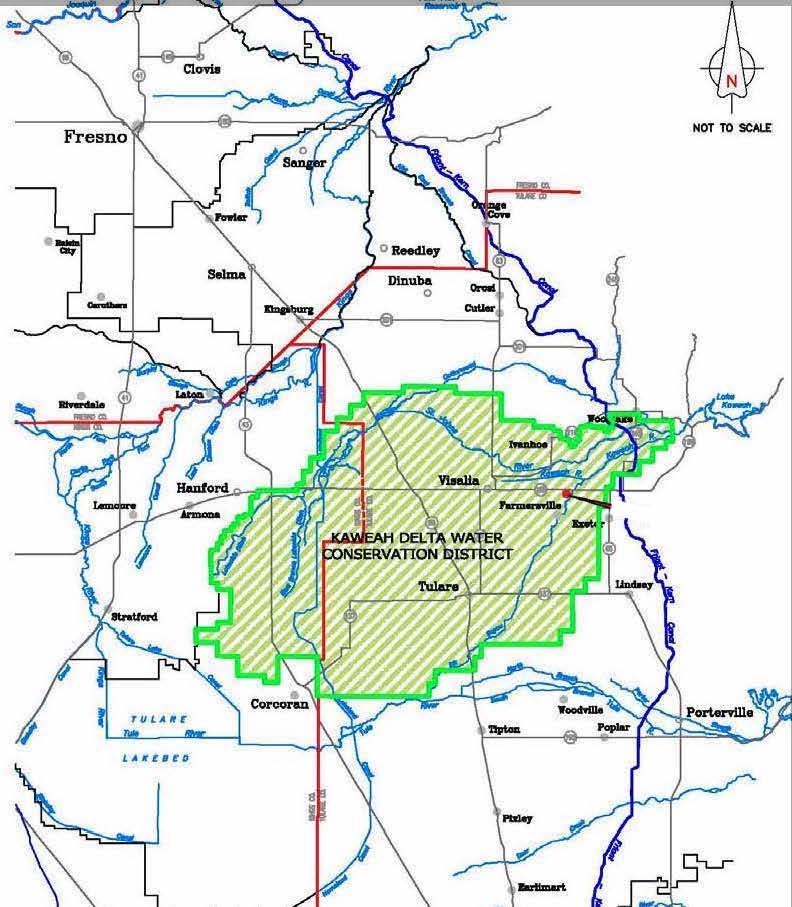Three San Joaquin Valley water agencies are gearing up to spend $10 million each in grant funding they received from the state Department of Conservation to retire or repurpose farmland.
Valley agencies that received grants so far include the Kaweah Delta Water Conservation District, Pixley Irrigation District Groundwater Sustainability Agency (GSA) and Madera County.
SJV Water will look at how each agency plans to use its $10 million in separate articles.
KAWEAH DELTA
The Kaweah Delta Water Conservation District covers about 340,000 acres in parts of Tulare and Kings counties. Three different groundwater sustainability agencies (GSAs) cover the Kaweah subbasin, which is being overdrafted each year by about 70,000 acre feet.
Each GSA has its own plans to either find more ways to recharge water into the aquifer or reduce pumping.
The $10 million from the state will allow the Kaweah Delta Water Conservation District to build a “toolbox” of options for farmers to find new uses for their land, said Mark Larsen, Kaweah Delta’s general manager.
“(Farmers) are going to have to use less water,” said Larsen. “And so this gives us an opportunity to try out some solutions that reduce that groundwater use.”
The $10 million will fund a variety of projects such as using farmland for solar energy fields, groundwater recharge basins or habitat enhancement, said Larsen. The specifics of each project will depend entirely on the landowner, he added.
The money will probably also be used as incentive payments to farmers.
“It’s going to hit a landowner in the pocketbook,” said Larsen of farmers losing acreage. “If we can offer some incentives for switching to a program where this land is repurposed in a different way, that’s going to be a little more palatable for what’s going to be a pretty tough situation for a lot of landowners.”
The first step in the process is for all parties to collaborate, he said. Disadvantaged communities, environmental groups, landowners and more will have the opportunity to weigh in on project options and offer input.
Nobody knows yet how much acreage or water the $10 million will impact, said Larsen. But it has to “make a dent,” and “move the needle towards less groundwater use,” he said.
There are a few properties throughout the subbasin that have been preliminarily identified as repurposing projects, said Eric Osterling, general manager of the Greater Kaweah GSA.
“It’s the carrot rather than the stick to allow people to make decisions for themselves,” said Osterling. “So people can choose what best fits them and their business model.”
The grant money gives water managers the ability to evaluate land opportunities in the light of groundwater sustainability, said Osterling. And there is some flexibility to that. Even if some land isn’t the best for environmental mitigation purposes, managers can still evaluate it for hydrogeological or geographical impacts with regards to groundwater.
NEXT: How Madera County will use its $10 million to bolster a not so experimental “experimental program.”
Share this:
- Click to share on Facebook (Opens in new window)
- Click to share on Twitter (Opens in new window)
- Click to share on LinkedIn (Opens in new window)
- Click to share on Reddit (Opens in new window)
- Click to share on Tumblr (Opens in new window)
- Click to share on Pinterest (Opens in new window)
- Click to share on Pocket (Opens in new window)
- Click to share on Telegram (Opens in new window)
- Click to share on WhatsApp (Opens in new window)
- Click to print (Opens in new window)








